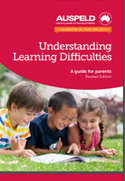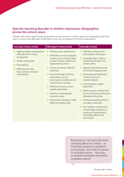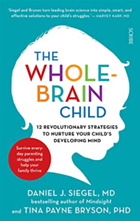Books and Resources


The Girl Who Never Made Mistakes
by Mark Pett and Gary Rubinstein
The Girl Who Never Made Mistakes tells the story of Beatrice Bottomwell, a young girl who is known for her perfection and for never making any errors. As a result, she gains local fame, and adults and children often watch her in awe. However, the pressure of maintaining her perfect image begins to take a toll on her. One night, Beatrice almost makes a mistake in a school talent show but recovers in time. The next day, as she is getting ready for another performance, Beatrice starts to feel anxious about maintaining her perfection. In a twist of fate, she does, in fact, make a mistake during her act, but instead of feeling terrible and a failure, she actually laughs at her blunder. Surprisingly, the crowd enjoys her vulnerability and she learns a valuable lesson: embracing her imperfections and living without the fear of making mistakes is a much happier, more fulfilling way to live.
I use this lovely picture book with younger and older primary school students to highlight an alternative to feeling terribly anxious or afraid of daily or specific challenges, particularly for children who tend towards perfectionism. It is a great starter of conversation, a way to lead into positive strategies for dealing with feeling nervous and vulnerable. This book offers a positive mindset approach that encourages children to appreciate who they are.
If you would like to order a copy of this book from Amazon click the link below.
The Girl Who Never Made Mistakes
- Picture Book
- Ages: up to 10 years
- Self-Esteem, It's Okay to Make Mistakes
Recommended by Vicky Jebsen, Counsellor
Hanen It Takes Two To Talk
by
Hanen's "It Takes Two To Talk" by Elaine Weizmann (available here: It Takes Two to Talk) is an excellent resource for parents and caregivers of children with communication difficulties. The program provides a comprehensive and practical approach to developing language skills in children from birth to age five.
The program is based on the principle that parents and caregivers are the most important teachers in a child's life and provides them with the tools and strategies they need to support their child's communication development. The program is designed to be flexible and adaptable to the individual needs of each child and family.
One of the strengths of the program is its emphasis on the importance of play in language development. The program provides numerous ideas and activities for parents to engage in with their child to promote language development in a fun and interactive way.
Another strength of the program is its focus on empowering parents to take an active role in their child's communication development. The program provides practical strategies for parents to use in everyday situations, such as mealtime and playtime, to promote language development and improve communication between parent and child.
The program is well-structured and easy to follow, with clear and concise instructions and plenty of examples and illustrations. It is also backed by extensive research and has been shown to be effective in improving communication skills in children with a variety of communication difficulties.
I recommend 'Hanen It Takes Two To Talk' is a great book to read as it provides parents guidelines to understand their child's communication style and development so both the caregiver and the speech-language pathologist can decide on the next actions and objectives. I often use it for my therapy with children in session to support language development. The book follows the child's lead using the "Follow the Child's Lead" technique to boost their confidence as communicators, identifies motivators, and provides strategies to encourage communication. The book is simple to follow with chapter guides on identifying where your child is in terms of communication stage, goal setting, and communication strategies and support.
Overall, I highly recommend Hanen's "It Takes Two To Talk" program to any parent or caregiver who is looking for practical, evidence-based strategies to support their child's communication development. It is a valuable resource that can make a real difference in the lives of children and their families.
If you would like to order a copy of this book from Amazon click here .
- Parent, Caregiver Guide Book
- Speech and Communication Development
- Early Childhood
Recommended by Vy Chuang, Speech Pathologist


Understanding Learning Difficulties


The Whole-Brain Child: 12 revolutionary strategies to nurture your child's developing mind
by
This book has been around for some time now, published in 2012, however, still remains a great insight into children and their behaviour. Dan Siegel, a neuropsychiatrist, explains the neurology and development of children and the connection to the behaviour they exhibit. It is a very easy to read book and provides parenting support and advice that will make sense, but also provide suggestions and practical tips for parents and caregivers.
The book is based on the research of neurscience and psychology and emphoasized the importance of integrating different parets of the brain to proote emotional regulation, problem-solving, and social skills in children. One of the main concepts introduced is t'brain state inegration', which invoves connecting different parts of the brain to promote overall well-being and emotional regulation. The book describes 12 diffferent strategies to promote the integration, including activities like SIFT (Sensations, images, Feelings, and Thoughts), naming emotions and storytelling.
There is a helpful section which describes the various aspects of the brain and how they work together. For example, the amygdala, hippocampus, prefrontal cortex, and the corpus callosum each contribute to different behaviours and emotions. Understanding these areas and how they relate to each other can help to gain a better understanding of children's behavoiur and emotions and ways to respond more effectively.
This is a book which is perfect on your book shelf to pull out and read key parts again when you need some inspiration.
Keep in touch!
Stay up to date with the latest news from All About Kids
© 2023 All About Kids. All Rights Reserved